3 October 2013 Global Views of Sea Surface Salinity from Space
Global maps of ocean surface salinity from the ESA SMOS and NASA/CONAE Aquarius satellites reveal a startling level of detail about ocean surface salinity beyond what is seen with the global Argo float network. With global coverage every 3 to 7 days, satellite salinity missions provide new frequently updated measurements that are of great value to global ocean circulation models and to quantify the ocean surface freshwater content and transports.
The figure [below] shows monthly-averaged sea surface salinity on a 1º grid between [-60ºS, 60ºN] generated at NOC for SMOS (top left), Aquarius (top right), the UK Met Office operational FOAM model (bottom left) and from near-surface salinity from Argo (bottom right). Similar satellite salinity products are also available elsewhere, for example from CATDS or NASA Aquarius web site.
Within the ESA STSE SMOS+SOS project, researchers at NOC, LOCEAN, Ifremer and UK Met Office are exploring different algorithm choices to produce optimal satellite salinity products for scientific exploitation and use in operational ocean circulation models. Algorithm choices include such considerations as: spatial and temporal resolutions of the products; use of filtering and/or flags to remove outliers; impact of mitigation and calibration strategies (e.g. RFI), etc…

![monthly-averaged sea surface salinity on a 1º grid between [-60ºS, 60ºN] generated at NOC for SMOS (top left), Aquarius (top right), the UK Met Office operational FOAM model (bottom left) and from near-surface salinity from Argo (bottom right)](/smos-sos/sites/smos-sos/files/images/sept2_mid.png)






